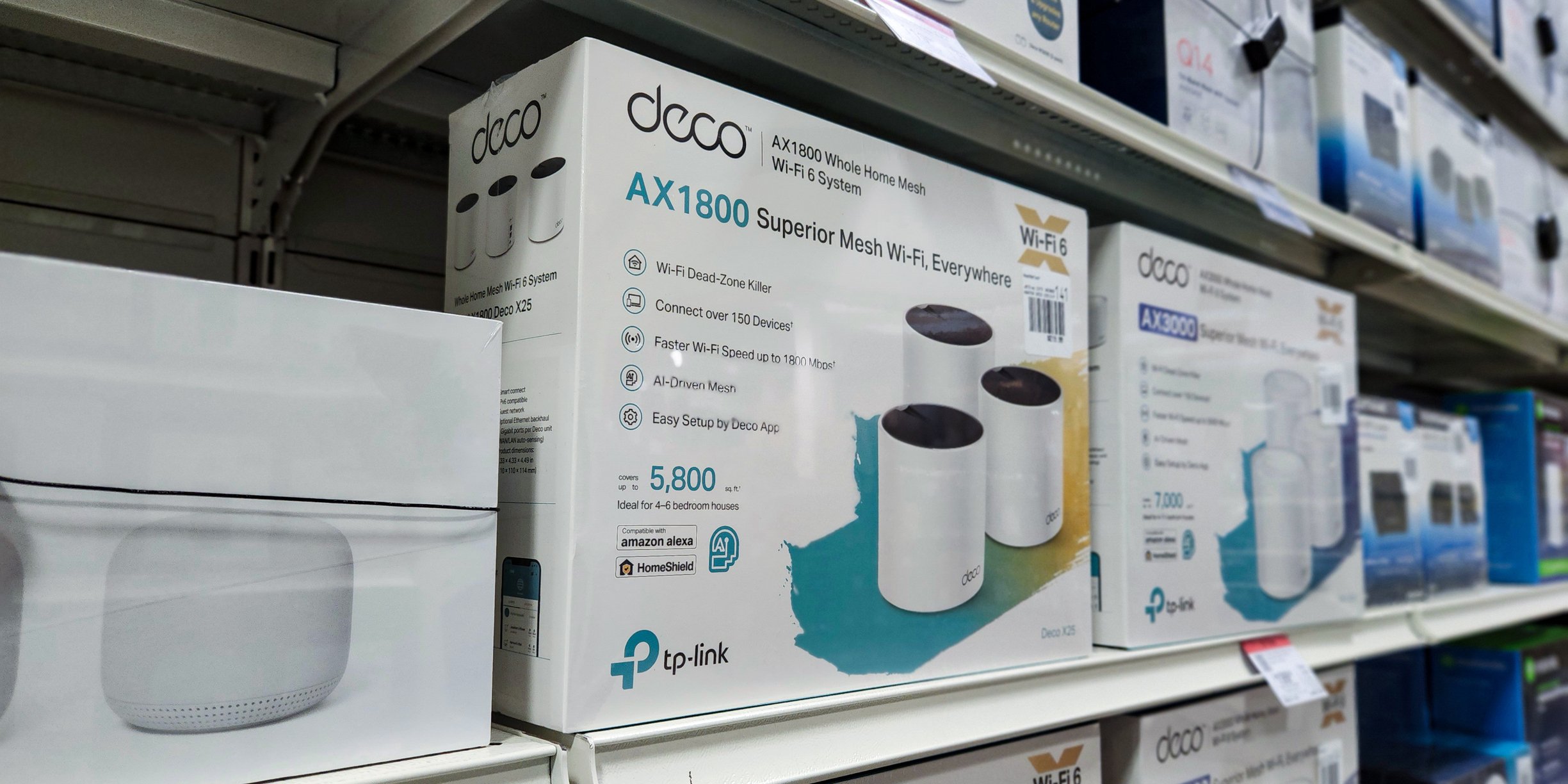Get Whole House Internet Without Whole House Wiring
I’ve put together 5 common ethernet alternatives designed to get strong internet wherever you need it.How-To
About 5 years ago, my brother designed a new house for my parents and when we got it built, we took the opportunity to run Cat6 cable to 18 locations in the house. I pulled all that cable and set up faceplates all throughout the house. We even built out a wall rack with modular patch panels, a network switch, a firewall, and battery backup. It was great to do all of this during the construction prior to all the walls being sealed up.
And then I went home to my Cape Cod that was built in 1949 with plaster and lathe walls, knob and tube electrical wiring, and a light switch in the kitchen to turn off power in my backyard garage. Running that same cable at home just wasn’t going to happen.
So, what do you do in older houses or even new houses that you don’t want to – or can’t! - cut a bunch of holes in the wall to get network from one end of the house to the other? There is Wi-Fi, but some devices might still need to get an ethernet connection. Or, maybe you have a situation where the house cannot do Wi-Fi from a single access point easily, either because of thick walls or other signal-disrupting issues. And most people don’t want to run 100 feet of ethernet cable along the floor of their hallways.
I’ve put together 5 common ethernet alternatives designed to get strong internet wherever you need it. They are:
1- Powerline Adapters
2- MoCA Adapters
3- Wi-Fi Extenders
4- Wireless Mesh Systems
5- Wireless Bridge Kits
Powerline Adapters
Ethernet over Powerline (EoP)
Powerline adaptors utilize your existing electrical wiring to create a connection. They’re incredibly simple to use – plug one adaptor into your outlet then connect it to your router with an ethernet cable. This places a signal on your internal wiring that can be accessed by plugging another adapter in another outlet, anywhere else in your house (so long as both adaptors are on the same circuit – in a vast majority of cases they will be, but unique situations can always happen).
These adaptors can get speeds anywhere from 500 Mbps to 1200 Mbps on a range upwards of 300 meters. This is further than the maximum distance you can run on a Cat 6 cable. So, it may be useful if you have a garage or barn on your property that you want to get signal to – or just an upstairs gaming PC.
As mentioned above, your mileage may vary here. Assuming all of your wiring and grounding in the house is good, this may be a great solution for you. But, depending on your wiring, you may lose a lot of speed if it makes it to the second adaptor at all. Unfortunately, the only way to know is to test them, but when they run as low as $30, it’s almost certainly worth a shot. Especially since they are amongst the easiest options to use.
There is no limit to the number of adapters you can use, though the more you have, the more it will stretch your bandwidth thin.
Many powerline adapters are sold in pairs so you’ll be good to go out of the box
Recommendations:
NETGEAR Powerline Adapter PLP2000 Kit
TP-LINK AV600 Nano Powerline Adapter Starter Kit
MoCA Adapters
Multimedia over Coaxial Cable
Many houses built in the 80s have a nice abundance of Coax Cable running through the house, either for Cable TV or for an Antenna on the roof. Much like the Powerline adapters, you can use the same existing cable in the house and piggyback an ethernet signal across it using a signal adapter. These adapters do offer higher throughput speeds (up to 2.5GBPS) than the powerline adapters but they do have a slightly higher price point as a result. You’ll also need to have power available to power both ends of the adapters.
Much like the Powerline adapters, your mileage may vary based on the installation quality of the cable and whether or not you have any distribution hubs set up in the house. Many of these MoCA adapters also offer 2.4 and 5 GHz Wi-Fi from the device as well, so you can use it to get Wi-Fi in hard-to-reach areas without setting up a separate Wi-Fi router.
MoCA adapters are typically sold individually.
Recommendation:
Wi-Fi Extenders or Range Extenders
Often referred to as Wi-Fi boosters, extenders utilize your existing home Wi-Fi and repeat the signal, increasing its range. These are most commonly used in covering dead spots in the house. These are easy to set up in that the compatibility is typically wide, what you are doing is setting up a device to connect to your Wi-Fi using your wireless key as you would any other device. It takes that connection and rebroadcasts the signal to the surroundings. These devices typically only need to plug into a wall outlet so they are easy to install and move around if you just need it for a temporary solution.
A quick diversion about the physics of Wi-Fi
All Wi-Fi is half-duplex, meaning the antenna – whether on your router or another device - can only send or receive a packet one at a time. It cannot send and receive packets simultaneously. So, depending on your needs, you may only be getting half the speed you expect. For things like streaming where you are only receiving streams of packets, it is not that noticeable. But if you are in a situation where you may get a lot of interference or cannot get a signal through walls, you will start to notice slowdowns or stuttering.
This slowdown can increase as you add more and more devices to your network, as the router sends a packet at a time to each device connected to it one at a time, sending a packet to each device before starting from the top again. If you’re seeing a lot of inf interference, a rebroadcast packet can take longer to get to you, especially if you have a lot of devices connected.
With that in mind, extender technology is basically capturing those packets and rebroadcasting them on the same antenna, which does add some latency. This is your biggest tradeoff, but shouldn’t have much of an impact on non-gaming households.
Recommendation:
TP-LINK Range Extender RE815XE - AXE5400 WiFi 6E Tri-Band Gigabit Wireless Router with Mesh Support
Wireless Mesh Systems
Many folks confuse mesh systems with Wi-Fi Extenders, as they function similarly, but the technology and software are different. Rather than rebroadcasting a packet from the wireless router, these devices are set up to communicate as a single system, essentially creating a network of routers. This is done by utilizing a dedicated antenna to connect to the other mesh devices. This creates a seamless web, or mesh, of antennas, helping to cover more of your house with strong, unbroken signal.
You are still limited to the half-duplex here, but because that antenna is not also sending data to your tv or other devices, latency is greatly reduced. There is incredible software built into these systems to allow some great analytics on how your devices are being used and also allow for some content control, like a firewall. Mesh systems are considered a whole house solution and are set up as a single system. These devices also typically have ethernet ports on them to allow you to plug in a printer or other ethernet device using wireless bridging, which we’ll get into deeper in the next option. These are often sold as pairs, 3 packs, or singular add-ons.
Recommendations:
TP-LINK Deco X25 - AX1800 WiFi 6 Dual-Band TP-Link Mesh Whole Home Wireless System
Google Nest Pro - AX5400 WiFi 6e Dual-Band Google Mesh Whole Home Wireless System
Wireless Bridge Kits
Used less often as a solution for within the house, wireless bridge kits can be used to connect buildings together. If you have a barn or garage on the property that is some distance away, you can set up a point-to-point or point-to-multipoint connection to carry a signal directly to it from your home to your other endpoint. There, you can set it up as a network switch to connect multiple ethernet devices or even a Wi-Fi access point. Wireless bridge kits can even be used to connect wireless, outdoor surveillance cameras
You will still be dealing with the half-duplex issue on the backhaul, but the transmitter and receiver is far more powerful and should be working in direct line of sight, so your rebroadcast of missed packets is dramatically reduced. And while they are fast – often delivering several gigabits of speed - the most impressive feature is the range, as they often measure performance in kilometers.
With the price as low as it is, especially compared to the potential tens of thousands of dollars for fiber, wireless bridge kits are a great way to set up long-range wireless networks. You will have build-outs that occur, as you’ll need to get an ethernet cable outside and in some cases up a mast, but they are PoE devices so at least the sending side doesn’t require running additional power to the outside. I use these professionally all the time and have been able to even run business phone systems on them.
Wireless bridge kits can be sold in pairs or individually.
Recommendation:
Ubiquiti Networks NanoBeam AC Gen 2 airMAX CPE with Dedicated Management Radio Access Point
I hope that you have found this helpful and see that you have a plethora of options when it comes to networking in difficult environments. Micro Center offers products in all of these categories and our associates are happy to talk you through your Wi-Fi needs to help you find the best solution for you. And, as a final bit of good news, set up on all these solutions is relatively simple, so you won’t need a degree in electrical engineering to get your home connected!











.png)
